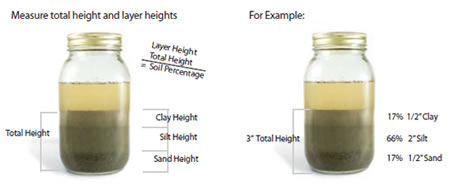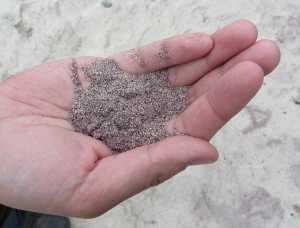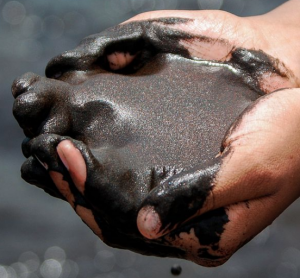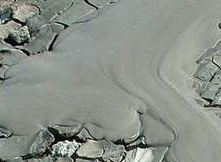When I first started gardening I truly thought dirt was dirt and plants would grow out of anything that you threw into a pot. Well, after a lot of trial, error, and confusion as to why my plants weren’t flourishing the way I’de seen other gardens, I realized that the “dirt” I was using was extremely inadequate. Who knew that there were different types of dirt; I sure didn’t. Turns out that there are hundreds of different types of dirt, each with its own unique mixture and composition. Depending of the make up of your unique soil you may be missing a basic component preventing its use as a growing media. So I decided to determine what the qualities of the best organic garden soil are and then share them with all of you. So here it goes:
Quality Soil Basics
The materials – such as soil, sand, and peat moss – that plants grow in is known as growing media. Basic requirements of growing media are:
- Have good water drainage
- Have adequate waterholding capacity
- Be free of harmful substances such as herbacide
- Be reasonable in cost and readily available
- Be free of weed seeds, insects, and disease.
Not too long ago practically all plants were grown in soil that had been improved by adding sand and peat moss. These were added to improve aeration, drainage, and water holding capacity, since most top soil is not suitable for growing plants satisfactorily without being modified somewhat. The main reason for this is because plants are normally grown in small containers, making it necessary for the media to be in nearly perfect conditions to support satisfactory plant growth and development.
Many problems are associated with making a satisfactory soil mixture. One is simply finding good topsoil to use. Even if good topsoil is available, it must be heated or chemically treated to kill weed seeds, insects, and disease-causing organisms. Also, if the top soil comes from a cultivated field there is the possibility of herbicide residue which might be harmful to certain plants. For example a herbicide that is registered for and safe to use on corn might leave a residue harmful to tomato plants.For the average home gardener wishing to start vegetable plants, the best growing medium is one created or purchased for the sole purpose on gardening.
Soil Mixture
So as you have now probably realized there are many different types of soil out there. Each unique soil is made up differently but share some commonalities in what they’re made up of. Determining what texture of soil you have access to can be a huge step forward. A super easy hand test can give you a pretty clear idea of what texture your dealing with.
Simply grab a hand full of soil, add some water to it in your hand, and rub your other fingers around in it. If your soil feels slippery/sticky or rubbery it has a high clay content. If your soil feels soft and powdery it has a high silt content. And, if your soil feels coarse and gritty it has a high sand content. If your looking to get a more specific measurement of the composition of your soil there are companies that offer super in-depth evaluations but in general i don’t see the need of these services. There are also home tests that you can run to get a pretty clear picture.

The easiest way I’ve found to get a more specific evaluation of the mixture of your soil is to use a clear sealable jar and the natural gravitational forces to separate your mixture. Loosely fill a jar just a little over half way with the soil being tested. Next, mix in enough water to have about 1 inch of extra water on top of the soil. Lastly, seal the container and shake like crazy. Place the jar on a table and let it sit for about 1 day. When you come back to check it you will notice the 3 main categories of substance have separated into pretty clear layers.
- The bottom layer will consist of your sand component. Sand is important for soil mixtures as it creates space in the soil to improve drainage. The sand particles are basically tiny irregular rock which allow water to move between the spaces created between these rocks. Soil that is too sandy will drain too quickly taking the vital nutrients your plant needs with it.

- The middle layer will consist of your silt component. Silt is a medium sized particulate that is not quite as coarse as sand but still more coarse than clay. This middle sized particulate is still quite dense and hold the most fertile nutrients in it. Because of its fine consistency, silty soils tend to have poor drainage but out of the three extra silty soils can still be used to grow a viable plant.

- The top layer will consist of your clay component. Clay is the finest of all your soil components and as such will have the least amount of drainage. Clay particles pack so tightly that they tend to not have any drainage at all, remaining waterlogged for extended periods of time. Then when they finally do drain they tend to dry into hard unworkable chips that are to hard for plant roots to prosper in. While clay is an important adhesive for your soil mixture too much will stunt your plants growth.

The water should still be slightly murky and have some floating organic sediments. If this is not the case you probably want to add some decomposing organic materials to help your soils quality and longevity.
Soil Ph
Soil ph can really make or break your garden and before I dug into media research I had no idea that soil even had a ph level. SO in case you were wondering ph is the “acidity” of the soil. The ph scale actually works backwards with low levels indicating high acidity. Water is used as the neutral ph and has a level of 7 so anything above is basic and anything below is acidic.
So why is acidity important for your garden? It is not directly needed however the nutrients and minerals that your plant does need to survive need the lower ph levels to be absorbed. What this means is that without a ph level somewhere around 6.3 to 6.9 your plants won’t be able to absorb the nutrients in your soil. Levels above and below these numbers cause vital nutrients to re-bond to the soil and become in accessible to your plants. If your ph level is off it doesn’t matter how nutrient rich your soil is, your plants’ roots will not be able to absorb any of it.
For optimal soil you need your ph level somewhere between 6.5 to 6.8. This low acidity level is perfect for helping your plant absorb all its required nutrients. When changing your soils’ ph level be sure to take a gradual approach shooting for you change to happen over weeks and month rather that days. One of the simplest ways to maintain and moderate ph balances throughout your gardening experience is through the use of a healthy layer of organic matter.
If your ph balance gets truly out of whack you may need to resort to using:
- Low ph situation (Acidic Soil)
- Powered Limestone to gradually raise your ph levels (your soil is too acidic)
- Wood Ash to drastically raise you ph levels (your soil is way to acidic, be careful)
- High ph situation (Alkaline Soil)
- Decomposing naturally acidic organic materials such as conifer needles, sawdust, peat moss or oak leaves to gradually lower you ph levels (your soil is to basic)
- Ground Sulphur to drastically lower you ph levels (your soil is way to basic)
Why Organic
So whats with this whole organic craze? Is it even a craze or is it something more? What decisions will “going organic” impact? Is there really that much of a difference?
Alright so long story short to start with, Yes its a craze but also something much more. Depending on how organic you want to go there can be very little day to day impact on your life. The difference is really just trying to minimize the amount of added chemicals we introduce to our environment both directly to the plants and indirectly to the soil and water as well. The focus is to use solutions for your garden problems that occur naturally in the wilderness.
Growing organic fruits and vegetables depends on a rich vibrant soil as apposed to added artificial plant foods. These natural methods tend to have a much lesser effect on the surrounding environment due to producing less runoff. It also reduces the amount of artificial additives you and your family are ingesting through these fruits and vegetables.
My Top Picks
Please click on the images below for more product and purchasing information:
Please leave me a comment below if:
- you have any experience with any of these products
- you agree or disagree with any of my recommendations
- you know of any superior products that I should try out next
- you have any extra information you would like to share with the Apartment Growers Community
I Hope This Helped,
-Atlas





Thank you for breaking down how to attain a quality soil. My wife and I have been gardening around 10 years and last year was a perfect example of what you are describing. We planted a 100 ‘ x 40 ‘ garden and spent three days planting everything. I planted three rows of pumpkin plants and only got 1 tiny pumpkin from it which my son picked to early. The only two plants that grew well was an acorn squash and yellow squash plant our compost planted. We have very bad clay soil but are renting so I am not sure the best way to correct the soil during the 3-5 years we are going to be here. You gavve some great ideas I think I will try to help balance my soil. I had never seen the mason jar test and will be giving it a try.
This is extremely helpful, man! I just moved out for the first time, and I went from a small house with a lot of land and a huge garden to a small apartment in the city. I’ve always had issues with soils when growing plants, so hopefully my array of potted plants won’t die as quickly now… It’s all trial and error, y’know
Hi there,
Awesome article!
I was looking for a way to grow my plants with organic soil. I didn’t know that we can buy the soil online, which is excellent! I am trying to grow an avocado tree in my garden, but unfortunately, it doesn’t seem to work. I have tried almost everything. I’ve put the avocado stone in the water and then planted it in the box. I followed all the recommendations, but nothing happened. So I thought it might be because of the soil I use. Do you think the organic soil will help my avocado plant grow? Also, if I order the soil online, wouldn’t it be too heavy?
Thank you for this excellent post!
Hey Daniella,
So I have a 3ft tall avocado tree growing behind me as I’m writing this, which i grew from a seed. The method i used was standing the seed upright in a small bottle cap so that the seed rested about 1/4 inch from the base of my water dish. I then filled the dish with enough water to cover about 1/4 inch of the seeds base. i finally lightly covered the whole thing with loose plastic wrap. From that point on its just a waiting game. I think mine took about 3 months to sprout. Throughout the process i changed the water maybe once a week. Once it sprouted I used the foxfarm soil in a large self-watering container and it is still growing great.
Hope this helps,
-Atlas